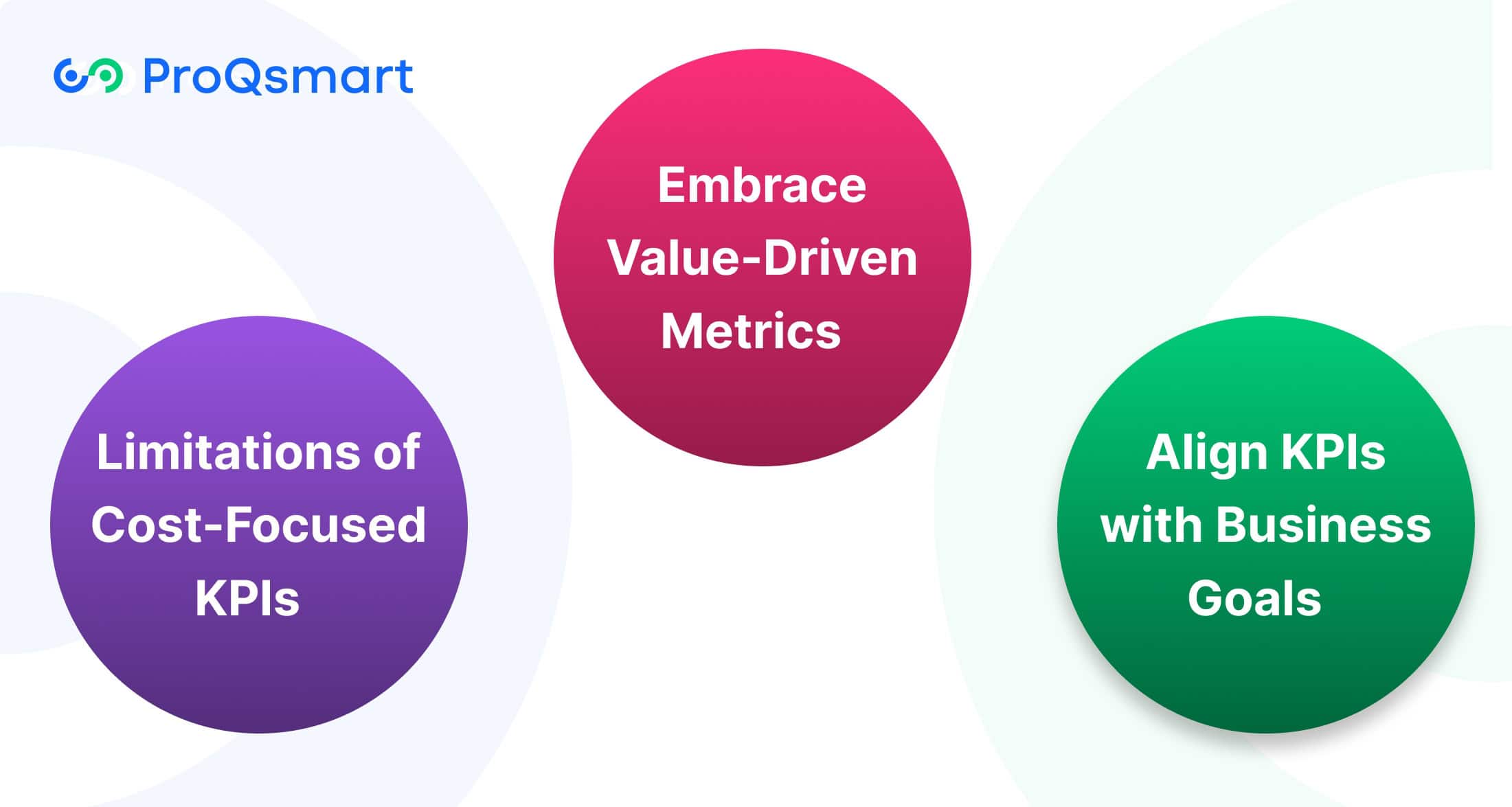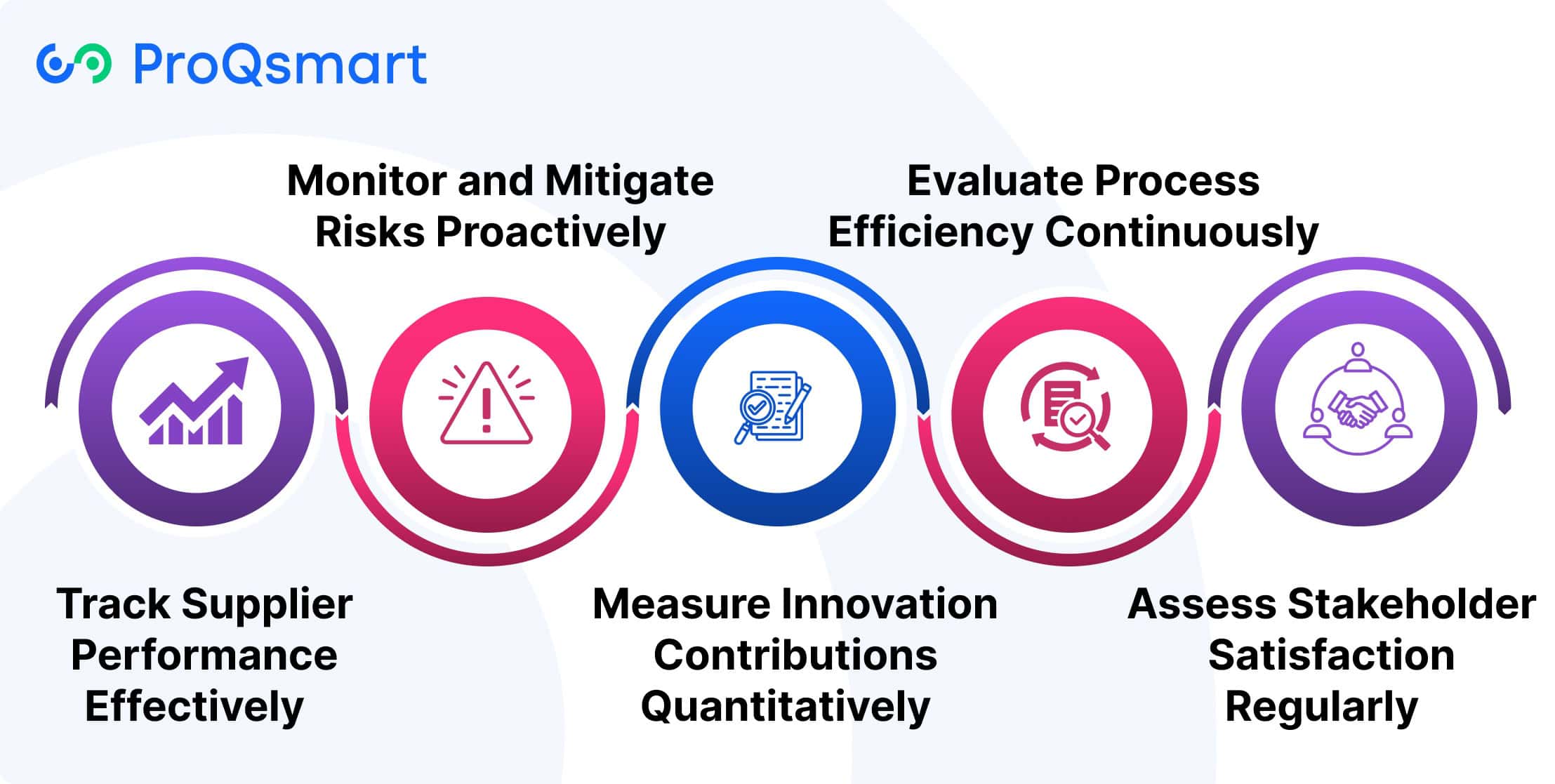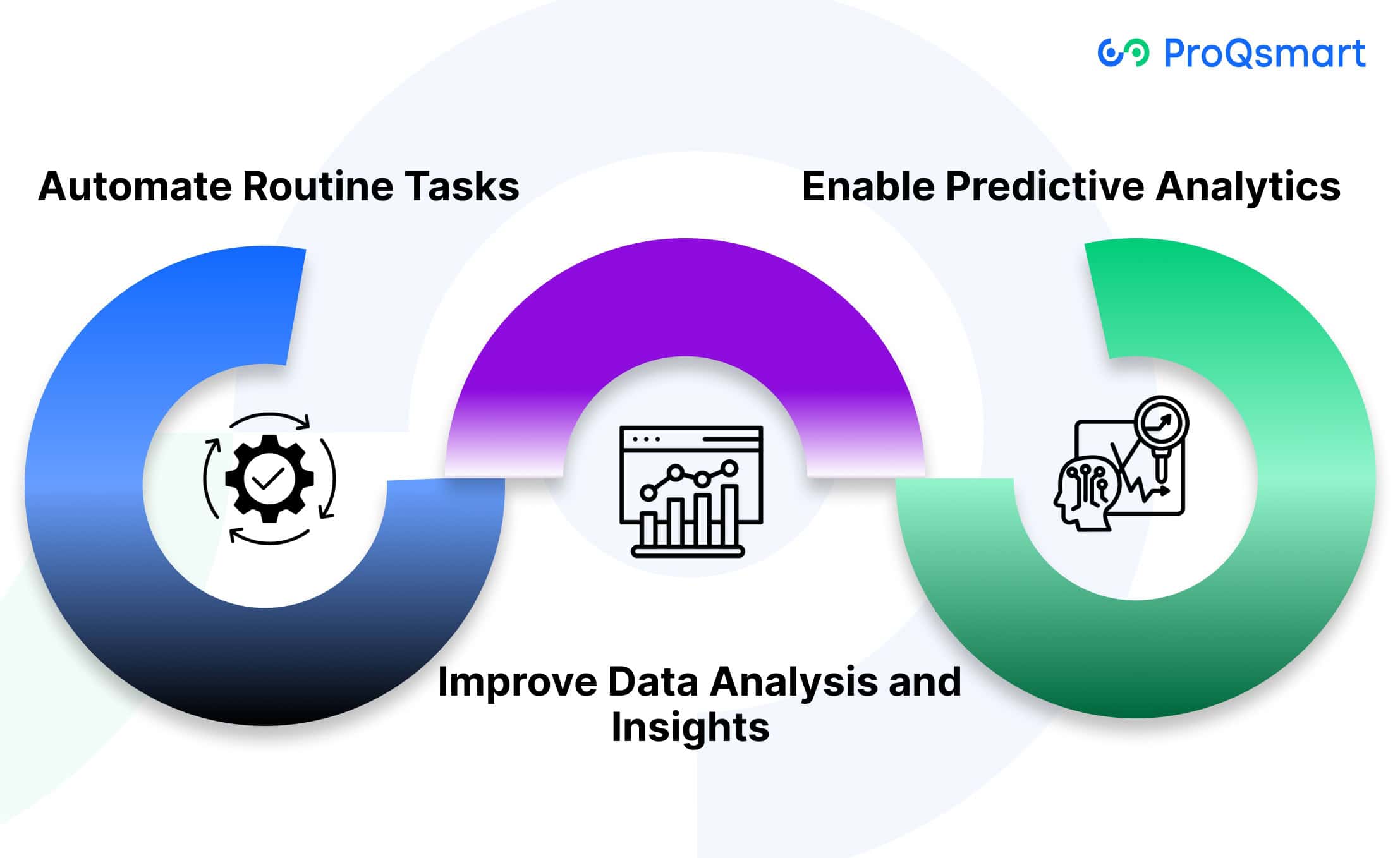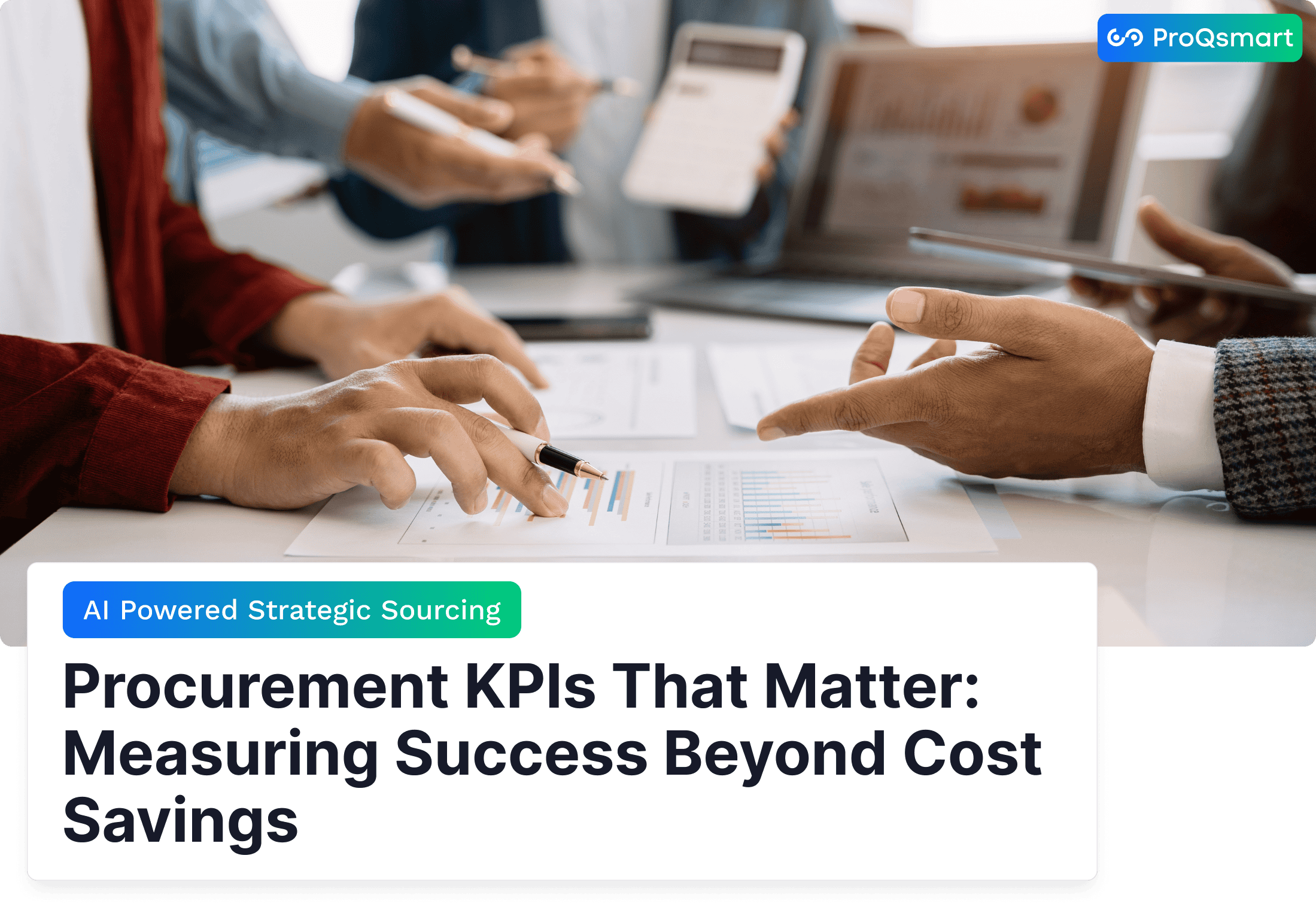Procurement is generally defined as the acquisition of goods, services, or works from an external source. It takes a defined process to deliver value, cost savings, and compliance.
It is a strategic engine that allows businesses to run by ensuring things like supplier relationship management, contract negotiation and management, and cost optimization. Even in the United States, procurement can require careful navigation through layers of often confusing regulations and using technology to simplify workflows while ensuring transparency.
As sustainability becomes an increasing focus across the industry, procurement strategies have expanded to incorporate ethical sourcing, waste reduction, and supplier diversity. By focusing on procurement basics, businesses can improve overall operational effectiveness, reduce risks and promote long-term business growth.
This article explores key aspects of procurement, offering actionable insights to help you refine and elevate your strategies for success.
Understanding Procurement KPIs
Procurement Key Performance Indicators (KPIs) are valuable quantitative indicators of performance. They are meant to measure the overall effectiveness and value of procurement activities, well beyond simple cost savings.
They offer a useful framework for quantifying success along all three dimensions—cost, supplier performance, and operational efficiency. By tracking these KPIs, procurement teams gain insights into their strengths and areas for improvement, enabling data-driven decisions and strategic alignment with business goals.
Traditional Procurement Measurement Shortcomings
In the past, procurement success was largely based on cost-focused KPIs, like purchase price variance or cost avoidance. Though cost metrics are still important, focusing on only these measures can miss the larger organizational value.
Not all low-cost suppliers can be relied on for quality. This can lead to costs down the road, like delayed production and increased defect rates. Narrowly focusing on financial metrics risks missing opportunities for innovation and supplier collaboration, which are crucial in today’s dynamic supply chains.
Qualitative factors, like the strength of supplier relationships and ability to adapt, need to be included to develop a complete judgement.
Evolving Role of Modern Procurement
Procurement has become more than a transactional function and now serves as a strategic pillar in business operations. Today, smart procurement is not only about delivering savings; it delivers on sustainability, risk mitigation, innovation, and other enterprise-wide objectives.
Through engagement with core departments such as finance and operations, procurement can facilitate spending decisions that are more in tune with organizational objectives. This partnership helps bring compliance and transparency to the process.
ProQsmart is leading this transformation with AI-powered tools. By utilizing capabilities such as supplier performance monitoring, automated workflows, and real-time budget tracking, businesses can realize sustained value over time.
Key Steps in the Procurement Process
The procurement process offers organizations a legitimate framework for sourcing and acquiring goods or services. This not only meets budgetary goals but operational goals as well by maximizing efficiency. It is typically divided into three overarching stages: sourcing, purchasing, and receiving.
We’ll take a look at the key steps in each phase. This will provide you with a big-picture view of how to prioritize and optimize your procurement activities.
Define Needs and Plan Procurement
Properly and comprehensively defining procurement needs is the basis of an effective procurement strategy. This means working to understand pressing needs within an agency and connecting them to larger priorities.
For example, using historical data or market trends to forecast demand can help mitigate issues with overstocking or shortages. A clear procurement plan allows for the prioritization of tasks to occur allowing for the budget and other resources to be allocated accordingly.
Identify Potential Suppliers
Taking a systematic approach is key to identifying suppliers. Digital tools and procurement platforms such as ProQsmart help streamline this process.
They simplify supplier discovery with AI-powered insights and e-tendering. Building relationships with diverse suppliers increases flexibility and expands sourcing options, which is important for mitigating supply chain risk.
Evaluate and Select Suppliers
Developing and determining a set of objective criteria like cost, quality, and reliability guarantees that suppliers are held to the highest standards. Implementing a scoring system or weighted evaluation criteria is a crucial step toward making data-driven decisions.
Platforms like ProQsmart take supplier performance monitoring a step further, maintaining a clear, auditable trail and keeping the whole process transparent and compliant.
Negotiate Contract Terms
Negotiation should focus on reaching deals that foster collaborative relationships. For instance, prioritizing equitable payment terms and transparent service-level agreements can build trust and improve operations on both ends.
Thorough documentation of terms prevents misunderstandings and disputes down the line.
Issue Purchase Orders Efficiently
Facilitating an easy creation of purchase order (P.O.) cuts down on time lost. ProQsmart simplifies and automates workflows, gives you real-time tracking of every P.O. Status and keeps communication with suppliers smooth and effective.
This minimizes manual error and streamlines procurement cycles.
Expedite Order Fulfillment
Keeping a close eye on fulfillment timelines will help you deliver on time. Building strong relationships with suppliers helps clear up or avoid bottlenecks, and having contingency plans protects your business from supply chain disruptions.
For example, having pre-approved secondary suppliers on hand prevents future delays.
Receive and Inspect Goods
Comprehensive inspection protocols help guarantee goods received are in line with specifications. Training your staff on the proper receiving process ensures your inventory is always as accurate as possible.
ProQsmart’s bill of quantities feature makes it easier to track these changes, keeping everyone accountable.
Process Invoices and Payments
Automated invoice processing increases accuracy and processing time. By connecting payment tracking with procurement activities, ProQsmart helps keep cash flow optimized and on track, avoiding costly delays.
Keeping an eye on payment terms builds supplier confidence.
Maintain Records and Relationships
Keeping thorough procurement records not only provides something that is auditable for compliance but also enhances the procurement process performance, allowing for strategic understanding and better tracking of supplier performance metrics through ProQsmart to build solid and transparent supplier relationships.
How to Measure Procurement Success Beyond Cost

In procurement, success has traditionally been tied to cost savings. While cost-focused metrics offer valuable insights, they only tell part of the story. A more holistic approach, which incorporates value creation, strategic alignment, and qualitative assessments, delivers a complete picture of procurement’s contribution to organizational goals.
Limitations of Cost-Focused KPIs
When cost metrics are the sole measure of success, they can hide catastrophic risks, such as failure to deliver on-time or meet regulatory requirements, that impact operations. Rather, by measuring things such as their supplier relationships and how they contribute strategically, you will have a holistic view of their success.
Metrics like on-time delivery rate—calculated as (On-time orders / Total orders) x 100—offer insights into reliability, while purchase order accuracy, derived from (Accurate POs / Total POs) x 100, ensures operational precision.
Embrace Value-Driven Metrics
Assessing value goes beyond numbers. Metrics such as procurement cost avoidance, calculated as Potential cost – Actual cost, highlight efficiencies.
Supplier performance monitoring, using unified scales for traits like quality and responsiveness, ensures standards are met. For businesses using tools like ProQsmart, features such as AI-driven supplier performance tracking and automated workflows simplify these assessments, fostering transparency and collaboration.
Align KPIs with Business Goals
Procurement KPIs should align to and clearly support strategic goals. Periodic review—weekly, monthly, or quarterly—make them more accurate and relevant.
Aligning objectives through cross-functional collaboration helps to ensure that procurement is playing a meaningful role in helping the business succeed. For example, inventory turnover, which tracks how quickly inventory is cycled through, reinforces just-in-time production strategies that are essential to agility.
Essential Strategic Procurement KPIs

Strategic procurement KPIs are instrumental when it comes to connecting procurement actions with higher-level business goals. They offer an opportunity to deliver continued measurable progress on performance, efficiency, and value creation, in stark contrast to the traditional transaction-based KPIs.
By tracking these KPIs, organizations can better position themselves to make informed decisions, optimize costs, and improve overall operational efficiency. Below are key metrics that procurement professionals should prioritize:
- Supplier performance metrics
- Risk management indicators
- Innovation contribution measurements
- Process efficiency evaluations
- Stakeholder satisfaction assessments
1. Track Supplier Performance Effectively
Effective supplier performance management ensures consistent quality, cost control, and timely delivery. By establishing clear performance criteria, businesses can evaluate supplier contributions against procurement goals like lead time and cost savings percentage.
ProQsmart’s supplier performance monitoring tool enables real-time assessment of contract compliance and delivery standards, fostering proactive communication to address challenges. For instance, consistently tracking suppliers’ on-time delivery rates can provide actionable data to strengthen relationships and refine sourcing strategies.
2. Monitor and Mitigate Risks Proactively
Procurement risks, such as supplier non-compliance or market volatility, can disrupt operations. Identifying these risks and using procurement tools to evaluate suppliers’ reliability ensures compliance and mitigates financial exposure.
Regularly reviewing risk practices helps businesses adapt to dynamic conditions, ensuring resilience.
3. Measure Innovation Contributions Quantitatively
Suppliers are essential to successful innovation. Metrics such as time-to-market for new products or improvements in operational efficiency due to supplier innovations provide objective, quantifiable measures.
ProQsmart’s mobile-first, AI-powered collaboration tools make innovation tracking and implementation easy, helping businesses bring supplier-driven advancements to market faster and more smoothly. For instance, measuring advances in product lifecycle costs can directly illustrate innovation’s measurable value.
4. Evaluate Process Efficiency Continuously
With procurement efficiency directly feeding into cost control and operational excellence, it’s vital for procurement teams to prioritize efficiency. Setting benchmarks like a lower PPV or lead time target gives you a clear picture of how the process is performing.
Tools such as ProQsmart make it much easier to evaluate efficiency through real-time dashboards and customizable reports. It also automates workflows and aligns procurement with budgets, creating streamlined operations and sustained, long-term cost savings.
5. Assess Stakeholder Satisfaction Regularly
Stakeholder satisfaction is the crux to optimizing procurement. Surveys and post-project feedback let teams proactively discover pain points in their processes and find areas for future improvement.
Enhanced communication and collaboration are crucial. ProQsmart promotes communication and collaboration by delivering transparency and real-time updates, keeping stakeholders continuously engaged and informed. By inviting this feedback, businesses can instill a culture of continuous improvement and ensure procurement strategies are always in alignment with the larger organizational goals.
Best Practices for Effective KPI Tracking
A robust procurement framework for Key Performance Indicator (KPI) tracking is essential for understanding your level of success and identifying areas for improvement. By prioritizing these procurement practices, companies can ensure their KPI tracking approaches are both efficient and powerful. Here are some additional, actionable best practices to help you establish an effective procurement process.
Define Clear, Measurable KPIs
Begin with clear KPIs that are specific, measurable, achievable, relevant, and timely (SMART). For example, tracking metrics such as purchase order (PO) accuracy (calculated as: (Number of accurate POs / Total number of POs) x 100) provides clarity on operational efficiency.
KPIs should track progress toward larger procurement objectives, such as improving cost savings or supplier performance, and always be relevant to all stakeholders. These regular updates, informed by changing business priorities, help to maintain a constant alignment with the organization’s strategic goals.
Implement Real-Time Tracking Systems
By investing in real-time tracking tools, procurement teams can get their hands on accurate, real-time data, enabling better-informed decision-making. Innovation Platforms such as ProQsmart leverage AI-driven insights to collate and centralize data, analyze it, automate workflows and establish a level of transparency unheard of.
Companies can implement practices such as electronic bidding, supplier tracking and budget-based buying. Together, these tools create a culture of data-driven decision-making that increases both accountability and efficiency.
Regularly Review and Refine KPIs
Conducting periodic reviews, and utilizing the same format and frequency in reporting (monthly or quarterly), ensures that the KPIs are effective and relevant. Incorporating procurement teams and internal stakeholders in feedback sessions will help to guarantee KPIs are aligned with and adaptable to evolving market conditions and business objectives.
For example, re-adjusting procurement cost avoidance (Potential cost – Actual cost) can bring savings opportunities into focus as circumstances change.
Communicate KPI Performance Transparently
Sharing KPI outcomes through dashboards fosters collaboration. Tools like ProQsmart visualize metrics, enabling comprehensive insights into procurement performance.
Open discussions about results help identify improvement areas while promoting accountability across teams.
How AI Enhances Procurement Strategies

Artificial Intelligence (AI) is quickly becoming one of the most impactful tools to change the procurement landscape. It unlocks cutting-edge capabilities that simplify workflows, improve insights, and fuel strategic innovation. With the support of AI, procurement professionals can proactively smooth out inefficiencies, discover insights they can act on, and get ready for whatever lies ahead.
Here, we explore some of the most tangible ways AI is improving procurement strategies.
Automate Routine Tasks
AI delivers the most value through automation of tedious tasks, including payment processing, order management, and forecasting demand. These manual tasks are not only inefficient, but they squander valuable time and money.
That way, you can spend more time on strategic activities such as managing supplier relationships and negotiating contracts. Procurement software, like ProQsmart, allows you to streamline workflows using automated processes, like e-tendering, subcontractor management, and compliance tracking.
For example, AI-driven tools can automate invoice processing, increasing efficiency and accuracy to minimize errors and guarantee payments on time. This automation increases productivity and efficiency. It frees procurement teams to focus more on innovation and supporting long-term strategic growth.
Improve Data Analysis and Insights
AI is able to quickly analyze massive amounts of procurement data. This enables public and private organizations alike to identify patterns, trends, and emerging opportunities.
With modern analytics as a foundation, procurement teams will have the tools to implement data-driven decisions that support overall business objectives. Take ProQsmart’s supplier performance monitoring feature, for example, which allows you to evaluate and improve supplier relationships based on historical data, guaranteeing you only the highest quality partnerships.
Despite challenges like immature data infrastructure, reported by 21% of organizations, AI tools can interpret and improve data quality over time. This provides a strong foundation for strategic decision-making.
Enable Predictive Analytics
AI-driven predictive analytics is central to predicting future procurement requirements and avoiding failures. These tools empower procurement professionals to predict future supplier performance, maximize contract strategies, and preempt potential market disruptions.
AI has the capability to consider historical trends, as well as data in real-time. It suggests changes in contract lengths or start dates, so you can lock in optimal terms when negotiating.
ProQsmart increases strategic planning by equipping users with tools to support budget-driven procurement. These tools can help you align your procurement activities with your financial objectives.
By mitigating risks with predictive insights, organizations can stay one step ahead in a more competitive market, converting future challenges into opportunities for growth.
Conclusion
Procurement has an important role in determining the future success of business. With the right KPIs, clear strategies, and tools like AI, you’ll be able to make your procurement processes more efficient and impactful. When you track more than just cost savings you can learn more about what’s really happening within your operations. Prioritize long-range planning and regular data analysis. This holistic approach is the key to deepening supplier relationships, mitigating risks, and maximizing efficiency.
True success in procurement cannot be measured with a math equation. It’s about creating value, being open to pivoting, and having the data to make better decisions. By remaining proactive and using technology to your advantage, you can not only fulfill your goals, but propel your organization towards long-term sustainable growth. So stay vigilant, keep adjusting your strategy, and you will continue to deliver tangible results.
Optimize your procurement strategy with AI-driven insights, strategic KPIs, and cutting-edge tools. Strengthen supplier relationships, mitigate risks, and drive long-term success. Book a demo with ProQsmart today and transform your procurement for the future!




